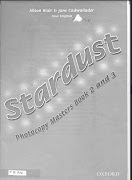Adults often begin writing and realized that they don't remember all the rules they learned in Mrs. Peacock's 8th grade English class.
Most adults in the workplace today have purchased -- on at least one occasion -- a writing guide. Grammar, style, punctuation, sentence structure and irregular verbs are all elements of grammar and style that we often just don't know anymore.
And for anyone who has to communicate professionally -- whether a formal business presentation or a general improvement in their everyday conversational ability -- has gone to the bookstore to look for a grammar and style guide.
Teach Yourself Grammar and Style in 24 Hours is a straightforward guide to everything from basic nouns and verbs to expressing clear thought in writing. Based on the proven Teach Yourself formula, the authors will construct 24 1-hour lessons on grammar and style that build sequentially. Since grammar and style work together, readers can see how one chapter affects the next as they progress.
























